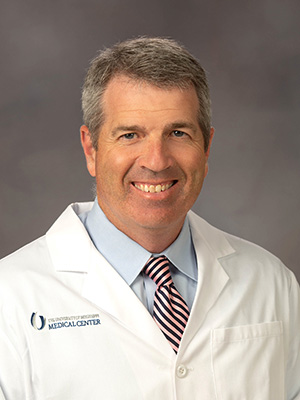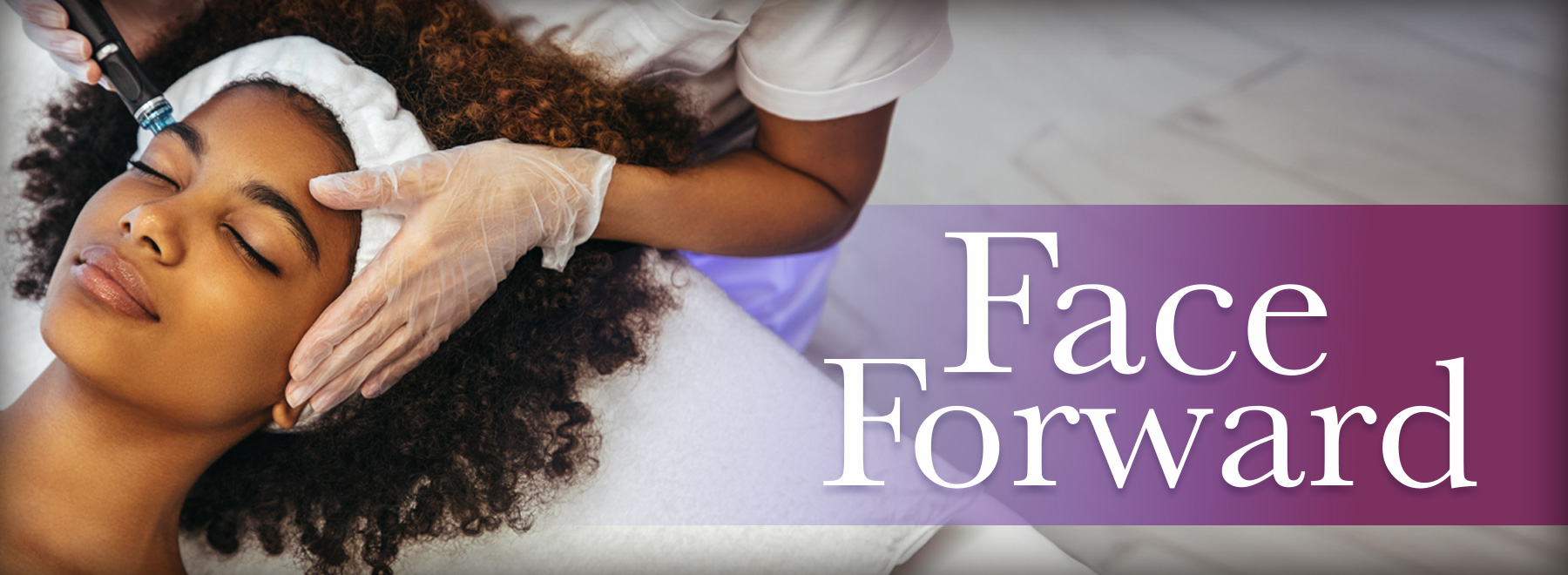Aesthetic options available at UMMC’s Face and Skin Center
Enhancing and rejuvenating the skin's appearance, texture, and overall health can start with a visit to the University of Mississippi Medical Center’s Face and Skin Center in Ridgeland.

The center’s aesthetic treatments can repair the ravages of time and UV radiation, said Dr. Jeremy Jackson, chair of the Department of Dermatology. Most importantly, the center’s dermatologists can detect early signs of skin cancer.
“We teach prevention and preach sun protection,” he said. “There are benefits to sunlight, such as Vitamin D and being active outdoors, but the sun’s harms can outweigh its benefits. That’s why we encourage people to wear sunscreen with an SPF of 30 or higher and protective clothing and avoid the sun between 10 a.m. and 4 p.m.”
The Face and Skin Center offers facial sunscreens that are light, water-resistant and can be worn under makeup as well as other sunblock options.
“There are makeup products that include a sun protection factor, or SPF, but we recommend wearing those over a sunscreen for a higher level of facial protection,” Jackson said.
If sun damage has already happened, the center’s dermatology team offers solutions. Chemical peels use acids to exfoliate and rejuvenate the skin by lightening brown spots (freckles), eliminating fine lines and softening the appearance of acne scars. IPL treatments are popular for targeting sun damage and redness, offering a non-invasive solution with minimal downtime.

"For the brown spots and small superficial blood vessels on the skin, Intense Pulsed Light (IPL) is a great treatment,” said Dr. Kimberley Ward, professor of dermatology at UMMC and a dermatologist at the center. “It uses specific wavelengths of light to help fade these spots. For more prominent blood vessels, the pulsed dye laser (PDL) is very effective. Chemical peels are also a great option for brown spots and can improve the texture and reduce the sallow appearance of the skin. Fillers can help to recreate some of the volume lost with skin aging and can be used to reduce lines in some areas as well.”
Age should be factored into skin care and treatments.
“One of the most common changes to the skin with aging is increased dryness,” Ward said. “You may find that you need thicker moisturizers and more gentle cleansers that don't strip the skin of natural oils. Along with this dryness may come more sensitive skin, so some people find that they need to avoid irritants in skin products.”
The most popular aesthetic treatments at the center are injectables, including soft tissue fillers and Botox, a type of neuromodulator, Ward said. Also in demand are laser hair reduction, and skin rejuvenating therapies such as intense pulsed light (IPL) and chemical peels.
Dermal fillers such as Juvéderm can restore volume and reduce wrinkles, while Botox reduces wrinkles by relaxing the muscles to stop them from producing deep furrows when they contract.
Laser hair reduction heats hair down to the follicle, destroying it so the hair doesn’t return.
Ward said it’s important for patients to make sure aesthetic procedures are right for them.
“Patients with poor wound healing may need to be more cautious about the cosmetic treatments they select, but that may not be an absolute contraindication,” she said. “There are some laser procedures that are not appropriate for patients with more richly pigmented skin because of the risk of producing dark spots."

Dr. Robert Brodell, tenured professor and chair of the Department of Pathology, past-founding chair of the Department of Dermatology, and Billy S. Guyton, MD Distinguished Professor at UMMC, said sun damage is cumulative, meaning that those sunburns from younger years add up to visible skin damage and skin cancers later in life.
“Chronic sun damage produces what doctors call solar elastosis,” he said. “These findings include yellowing or sallowness of the skin, thickening, deep lines and wrinkles and brown spots. It can even cause blackheads, whiteheads, cysts and even pre-cancerous actinic keratoses and skin cancers including basal cell cancer, squamous cell cancer and malignant melanoma.”
Skin cancer is the most common type of cancer in the U.S., with about one in five Americans developing skin cancer in their lifetime, according to the American Academy of Dermatology. Fair-skinned individuals are at special risk.
“It’s important to apply sunscreen before spending time outdoors,” Jackson said, “and to reapply it every 60 to 90 minutes. That’s where many of us fail – we don’t reapply.”
Men are less likely to use sunscreen or reapply it if they do use it, Jackson said.
“I tell men who golf that, after the first nine holes, they need to reapply sunscreen before heading to the back nine.”
Myriad sunscreens are on the market, Ward said, “but my favorite sunscreen for a patient is the one that the patient likes and will use every day.”
The best way to determine what skin care treatments are best for reversing the signs of sun damage is to schedule an evaluation.
"We see patients for cosmetic consultations and can discuss a particular concern or give general recommendations for the individual's skin,” Ward said. “Our staff at 601-853-6333 would be happy to help with an appointment.”
The above article appears in CONSULT, UMMC’s monthly e-newsletter sharing news about cutting-edge clinical and health science education advances and innovative biomedical research at the Medical Center and giving you tips and suggestions on how you and the people you love can live a healthier life. Click here and enter your email address to receive CONSULT free of charge. You may cancel at any time.



